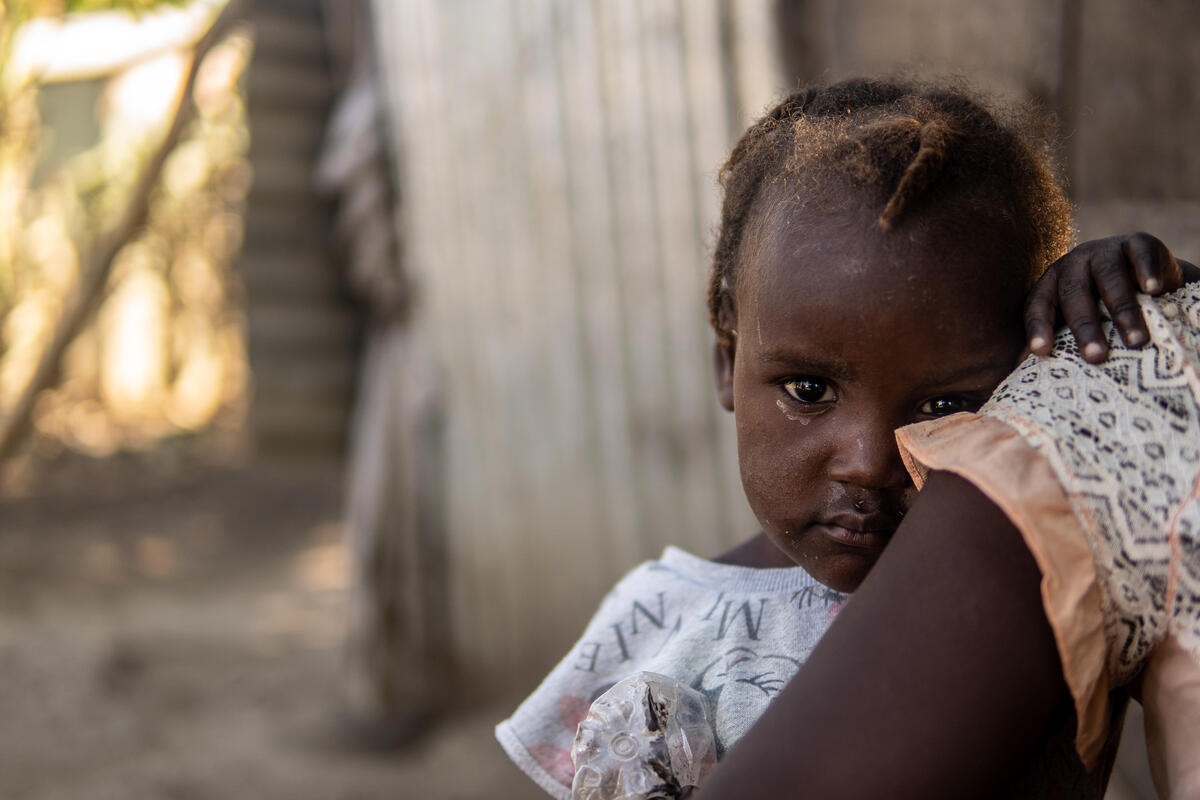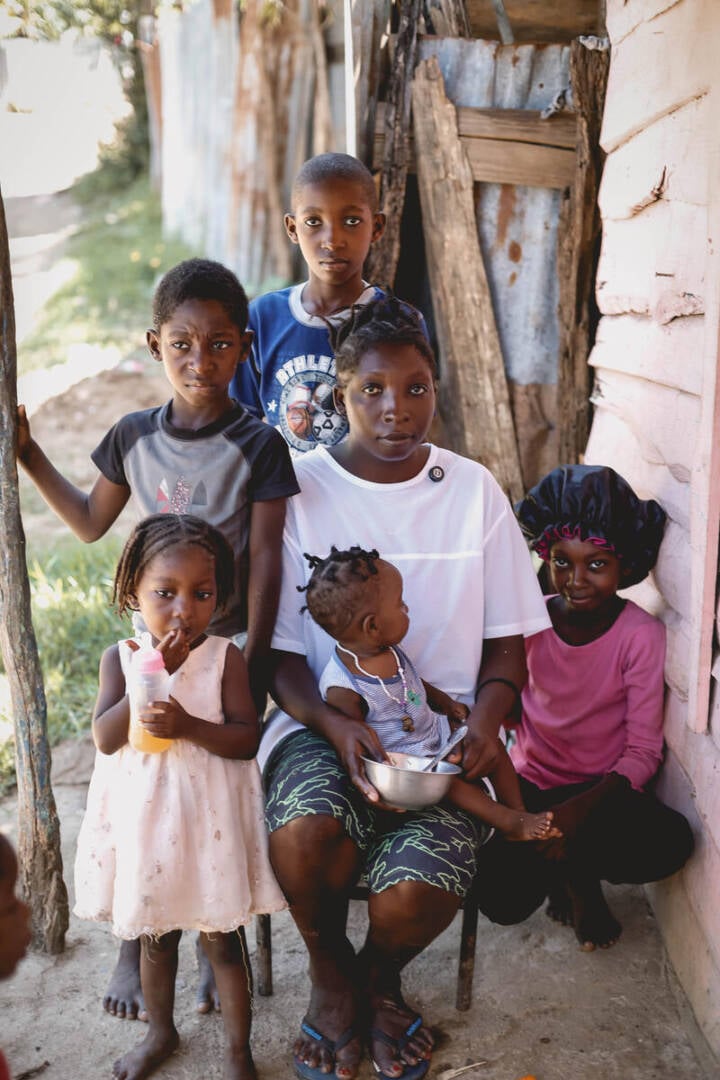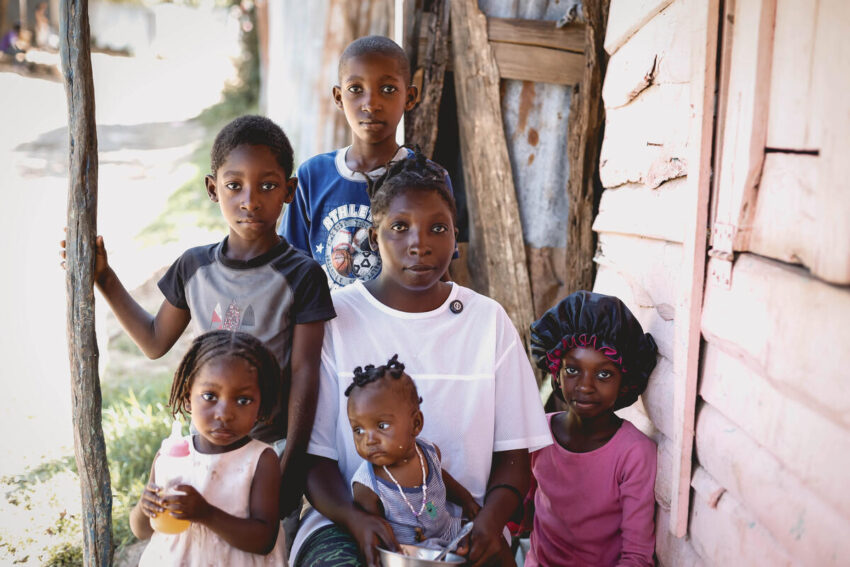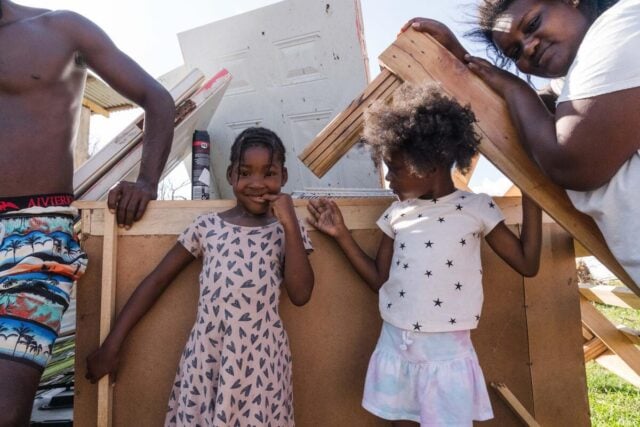Haiti faces a worsening humanitarian crisis. Armed gang violence, hunger, and now the force of Hurricane Melissa are placing millions of people at greater risk. Children and families already struggling to find food and safety are facing the added threat of a catastrophic hurricane sweeping across the Caribbean.
World Vision is deeply concerned about the escalation of violence and the latest storm, which together threaten the safety and well-being of millions, particularly children.
Haiti in crisis: Facts, FAQs, and how to help
- Fast facts: Haiti crisis
- What is the current situation in Haiti?
- Why is Haiti in crisis?
- What are the challenges and risks for Haitian children?
- How is World Vision helping vulnerable Haitian communities today?
- How many people in Haiti has World Vision supported?
- How can I make a difference and support Haitian children and families?
Fast facts: Haiti in crisis
- Widespread poverty: Haiti, the most impoverished nation in the Latin American and Caribbean region, faces severe economic challenges.
- Food insecurity: Nearly half of the Haitian population (5.7 million people) is affected by acute hunger, with over 2 million facing emergency levels of hunger.
- Displacement: Conflicts and natural disasters have displaced approximately 1.3 million people — over half of them children — within the country as of June 2025.
- Violence: Grave violations against children have surged 490% between 2023 and 2024, according to World Vision’s report.
- Healthcare crisis: The health system is on the brink of collapse, with 42% of the health facilities in the capital shuttered. Approximately 27% of hospitals are fully operational nationwide.
- Gender-based violence: Women and girls are increasingly victims of gang-related violence.
- Cholera outbreak: Since October 2022, nearly 87,000 suspected cases have been reported.
- Natural disasters: Haiti is highly vulnerable to earthquakes, hurricanes, and storms. Past disasters include the 2021 and 2010 earthquakes. Most recently, Hurricane Melissa has added to the country’s flooding and destruction.
What is the current situation in Haiti?
Haiti is facing a prolonged crisis intensified by gang violence and compounding natural disasters. Escalated gang activity, particularly since February 29, 2024, has displaced thousands, while approximately 80% of Port-au-Prince is under gang control. Looting at the main port and the closure of essential services have worsened food insecurity. Thousands risk dangerous crossings into the Dominican Republic, desperately needing shelter, food, water, and medical care.
With Hurricane Melissa approaching, communities in both countries face further threats from heavy rain, flooding, and strong winds, which have increased the urgency for humanitarian assistance.
Why is Haiti in crisis?
Haiti has faced a multidimensional crisis for decades, caused by political unrest and economic instability. The COVID-19 pandemic severely impacted Haiti, exacerbating economic challenges and straining an already fragile healthcare system. Earthquakes, cholera outbreaks, and hurricanes, including Hurricane Melissa in late October 2025, continue to compound the hardships Haitians face today.

What are the challenges and risks for Haitian children?
A humanitarian crisis delivers the heaviest blow to the most vulnerable — especially children. Even before the catastrophic threat of Hurricane Melissa, children in Haiti faced challenging conditions:
- Exposure to violence: Witnessing or experiencing violence firsthand can have long-lasting physical, social, and psychological effects.
- Forced recruitment into gangs: Children are exposed to further violence and exploitation by being forced into gangs.
- Malnutrition and food insecurity: Crisis-induced food shortages and rising prices are putting children at greater risk of severe malnutrition and its lasting impacts.
- Lack of protection: Displacement and migration caused by the current volatile situation can separate children from their families and caregivers, making them more vulnerable to abuse.
- Limited access to healthcare: Closed hospitals and disrupted health services leave many children without access to essential care and vaccinations.
- Education disruptions: School closures due to security concerns put children at risk of setbacks or even complete loss of education.
Nothing to eat

“The children complain of hunger, and there is nothing to eat,” said Rosemita, a 28-year-old mother of five, who fled with her children (shown right) to the Dominican Republic, hoping they would have enough food and be kept safe. “The situation is very tough, very difficult.”
With nowhere to go due to the escalating violence in Haiti, they have found some relief through World Vision, which supports the family with essential aid and resources.
How is World Vision supporting vulnerable Haitian communities today?
World Vision works to support and safeguard vulnerable children and families during these dangerous and unpredictable conditions. Our longstanding operations in the country persist, and we remain committed to serving those in need in Haiti, as we have been doing for over 45 years.
Our support includes:
- Humanitarian aid: Food, clean water, shelter, hygiene kits, and cash assistance.
- Psychosocial and child protection programs: Helping children cope with trauma from violence and disasters.
- Gender-based violence support: Reaching survivors through case management.
- Emergency preparedness for Hurricane Melissa: Monitoring the storm and pre-positioning supplies to support 4,000 households with essential items, including food aid, access to clean water, shelter materials, and more.
“Children and families in Haiti are facing compounding crises,” said Lesly Michaud, World Vision’s national program director in Haiti. “We are committed to standing with communities through this storm and beyond, ensuring they receive the support they need to recover and rebuild.”
How many people in Haiti has World Vision supported?
In 2024, World Vision’s work in Haiti impacted:
- 47,942 people with access to clean water through 18 new water points.
- 59,032 pregnant and breastfeeding women with vital nutrition support.
- 18,909 people who benefited from food assistance programs.
- 191 children under 5 with care for severe malnutrition — over 81% fully recovered.
Additionally, our emergency response for the same year supported:
- 9,005 people with food assistance.
- 10,770 people with clean water, sanitation, and hygiene support.
- 11,318 people with gender-based violence prevention and psychosocial support through case management.
- 5,685 children with child protection programs and psychosocial support.
How can I make a difference and support Haitian children and families?
You can make an impact amid the crisis in Haiti and other disasters worldwide.
- Pray: Join us in praying for all those affected by the crisis in Haiti.
- Give: Your gift will help deliver crucial aid to vulnerable children and families affected by emergencies like the crisis in Haiti.
- Sponsor a child: Help equip a child, their family, and community for a brighter future. Sponsorship helps meet urgent needs today — and supports lasting empowerment through physical and spiritual resources.


